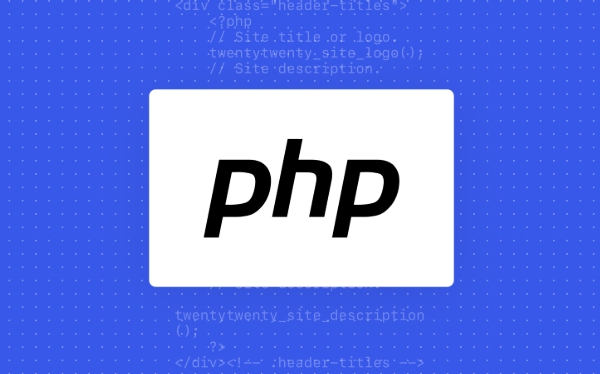How to change the session save path in PHP?
Jul 09, 2025 am 01:19 AMTo modify the session saving path of PHP, there are two methods: 1. Modify session.save_path in php.ini to implement global settings; 2. Use session_save_path() to set dynamically in the code. The first method requires editing the php.ini file, finding and modifying session.save_path as the specified directory, and restarting the server after saving, and ensuring that the directory exists and has read and write permissions; the second method is suitable for a single application, using session_save_path() to set an absolute path before calling session_start(), which does not affect other projects. Notes include: Ensure that the path is correct and readable and writeable, avoid the use of relative paths, pay attention to the possibility of overwriting configuration of the framework, troubleshooting failures caused by open_basedir restrictions or security mechanisms, and checking the call order and server log if the invalid setting is set.

By default, PHP will save session data in the server's temporary directory, but sometimes you may want to change it to other places, such as for security, performance or unified management. At this time, you need to change the save path of the session.

How to modify the session save path of PHP?
You can modify the save path of the session in two ways: one is to use the php.ini file to set it globally, and the other is to use session_save_path() function to set it dynamically at runtime.
Method 1: Modify session.save_path in php.ini (suitable for the entire server)
If you have permission to edit the server's php.ini file, you can directly change this configuration:

- Find your
php.inifile location (can be viewed withphpinfo()). - Search for
session.save_path. - Change it to the directory you want to use, for example:
session.save_path = "/var/lib/php/sessions"
- Save the file and restart the web server (such as Apache or Nginx) for the changes to take effect.
?? Note:
- Make sure the target directory exists and PHP has read and write permissions.
- If you use multiple servers for load balancing, it is recommended to use shared storage or database storage session.
Method 2: Use session_save_path() in the code (suitable for a single application)
If you do not have permission to change php.ini , or just want to set it separately for a project, you can use session_save_path() before calling session_start() :

session_save_path("/your/custom/session/path");
session_start();? The benefit of doing this is flexibility and will not affect other projects.
?? Notes:
- The path must be an absolute path.
- Also make sure that the directory is readable and writable.
- Do not use
./relative paths in paths, as errors are prone to occur.
Frequently Asked Questions and Notes
Sometimes you will find that setting the path is useless, and the session is still written to the default location. This may be the following reasons:
- Forgot to call
session_save_path()session_start()). - Some frameworks are used, which may handle the session configuration themselves.
- The server has enabled the open_basedir restriction, resulting in the custom path being denied.
- Security mechanisms such as SELinux or AppArmor block access.
Solution:
- Check the order of call.
- Check out the server error log.
- Try changing to a more "standard" path.
- If you are a virtual host user, you can contact the service provider to confirm the permission settings.
Basically that's it. As long as you pay attention to permissions and path format, the operation is not complicated, but it is easy to cause problems due to small details.
The above is the detailed content of How to change the session save path in PHP?. For more information, please follow other related articles on the PHP Chinese website!

Hot AI Tools

Undress AI Tool
Undress images for free

Undresser.AI Undress
AI-powered app for creating realistic nude photos

AI Clothes Remover
Online AI tool for removing clothes from photos.

Clothoff.io
AI clothes remover

Video Face Swap
Swap faces in any video effortlessly with our completely free AI face swap tool!

Hot Article

Hot Tools

Notepad++7.3.1
Easy-to-use and free code editor

SublimeText3 Chinese version
Chinese version, very easy to use

Zend Studio 13.0.1
Powerful PHP integrated development environment

Dreamweaver CS6
Visual web development tools

SublimeText3 Mac version
God-level code editing software (SublimeText3)

Hot Topics
 How to get the current session ID in PHP?
Jul 13, 2025 am 03:02 AM
How to get the current session ID in PHP?
Jul 13, 2025 am 03:02 AM
The method to get the current session ID in PHP is to use the session_id() function, but you must call session_start() to successfully obtain it. 1. Call session_start() to start the session; 2. Use session_id() to read the session ID and output a string similar to abc123def456ghi789; 3. If the return is empty, check whether session_start() is missing, whether the user accesses for the first time, or whether the session is destroyed; 4. The session ID can be used for logging, security verification and cross-request communication, but security needs to be paid attention to. Make sure that the session is correctly enabled and the ID can be obtained successfully.
 PHP get substring from a string
Jul 13, 2025 am 02:59 AM
PHP get substring from a string
Jul 13, 2025 am 02:59 AM
To extract substrings from PHP strings, you can use the substr() function, which is syntax substr(string$string,int$start,?int$length=null), and if the length is not specified, it will be intercepted to the end; when processing multi-byte characters such as Chinese, you should use the mb_substr() function to avoid garbled code; if you need to intercept the string according to a specific separator, you can use exploit() or combine strpos() and substr() to implement it, such as extracting file name extensions or domain names.
 How do you perform unit testing for php code?
Jul 13, 2025 am 02:54 AM
How do you perform unit testing for php code?
Jul 13, 2025 am 02:54 AM
UnittestinginPHPinvolvesverifyingindividualcodeunitslikefunctionsormethodstocatchbugsearlyandensurereliablerefactoring.1)SetupPHPUnitviaComposer,createatestdirectory,andconfigureautoloadandphpunit.xml.2)Writetestcasesfollowingthearrange-act-assertpat
 How to split a string into an array in PHP
Jul 13, 2025 am 02:59 AM
How to split a string into an array in PHP
Jul 13, 2025 am 02:59 AM
In PHP, the most common method is to split the string into an array using the exploit() function. This function divides the string into multiple parts through the specified delimiter and returns an array. The syntax is exploit(separator, string, limit), where separator is the separator, string is the original string, and limit is an optional parameter to control the maximum number of segments. For example $str="apple,banana,orange";$arr=explode(",",$str); The result is ["apple","bana
 JavaScript Data Types: Primitive vs Reference
Jul 13, 2025 am 02:43 AM
JavaScript Data Types: Primitive vs Reference
Jul 13, 2025 am 02:43 AM
JavaScript data types are divided into primitive types and reference types. Primitive types include string, number, boolean, null, undefined, and symbol. The values are immutable and copies are copied when assigning values, so they do not affect each other; reference types such as objects, arrays and functions store memory addresses, and variables pointing to the same object will affect each other. Typeof and instanceof can be used to determine types, but pay attention to the historical issues of typeofnull. Understanding these two types of differences can help write more stable and reliable code.
 Using std::chrono in C
Jul 15, 2025 am 01:30 AM
Using std::chrono in C
Jul 15, 2025 am 01:30 AM
std::chrono is used in C to process time, including obtaining the current time, measuring execution time, operation time point and duration, and formatting analysis time. 1. Use std::chrono::system_clock::now() to obtain the current time, which can be converted into a readable string, but the system clock may not be monotonous; 2. Use std::chrono::steady_clock to measure the execution time to ensure monotony, and convert it into milliseconds, seconds and other units through duration_cast; 3. Time point (time_point) and duration (duration) can be interoperable, but attention should be paid to unit compatibility and clock epoch (epoch)
 How to pass a session variable to another page in PHP?
Jul 13, 2025 am 02:39 AM
How to pass a session variable to another page in PHP?
Jul 13, 2025 am 02:39 AM
In PHP, to pass a session variable to another page, the key is to start the session correctly and use the same $_SESSION key name. 1. Before using session variables for each page, it must be called session_start() and placed in the front of the script; 2. Set session variables such as $_SESSION['username']='JohnDoe' on the first page; 3. After calling session_start() on another page, access the variables through the same key name; 4. Make sure that session_start() is called on each page, avoid outputting content in advance, and check that the session storage path on the server is writable; 5. Use ses
 PHP header location not working after include
Jul 13, 2025 am 02:08 AM
PHP header location not working after include
Jul 13, 2025 am 02:08 AM
When encountering the problem that header('Location:...') does not work, the common reasons and solutions are as follows: 1. There is output in advance, causing the header to fail. The solution is to ensure that there is no output before the jump, including spaces, HTML or echo; 2. There is excess output or UTF-8 BOM characters in the include or require file. The file encoding should be checked and saved as "UTF-8 BOM-free"; 3. It is recommended to use ob_start() to turn on the output buffer before the jump, and cooperate with ob_end_flush() to delay the output; 4. After the jump, be sure to add exit to prevent subsequent code execution; 5. Make sure that the header() function call is before all outputs.






